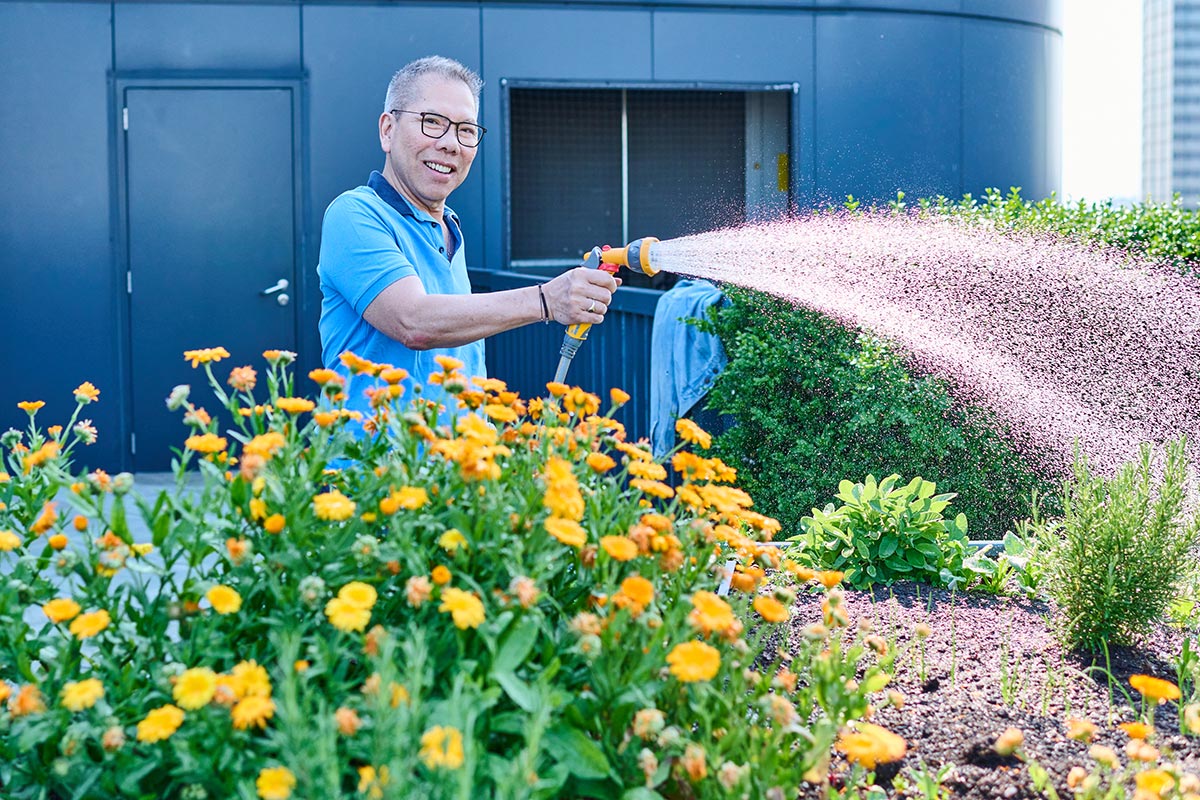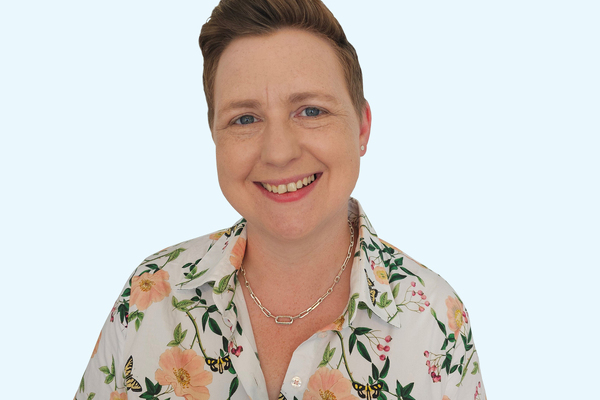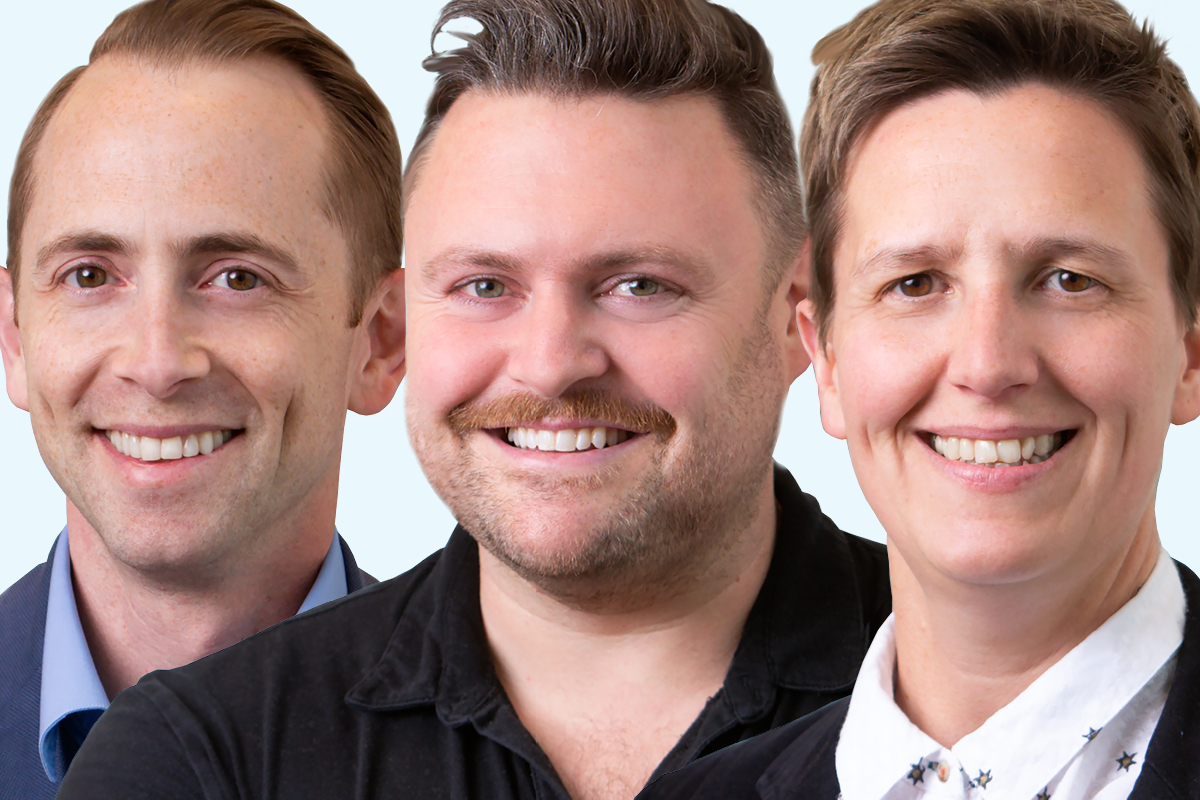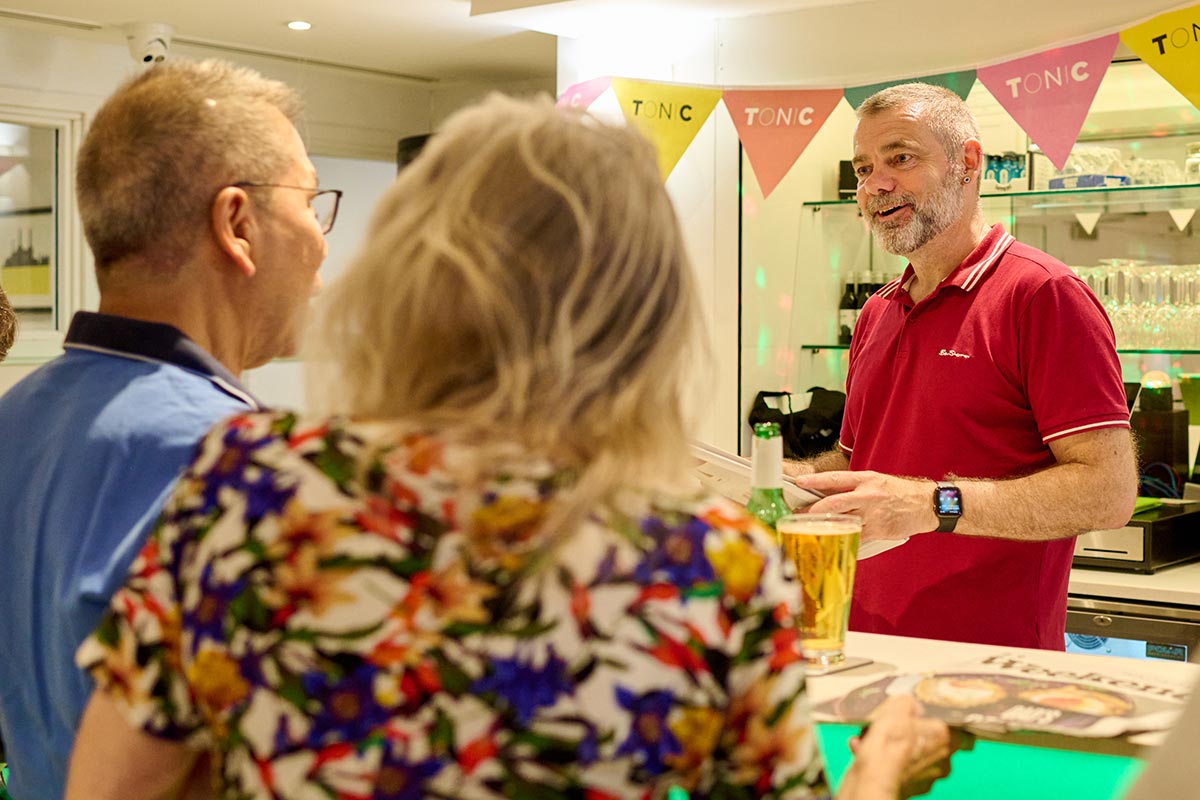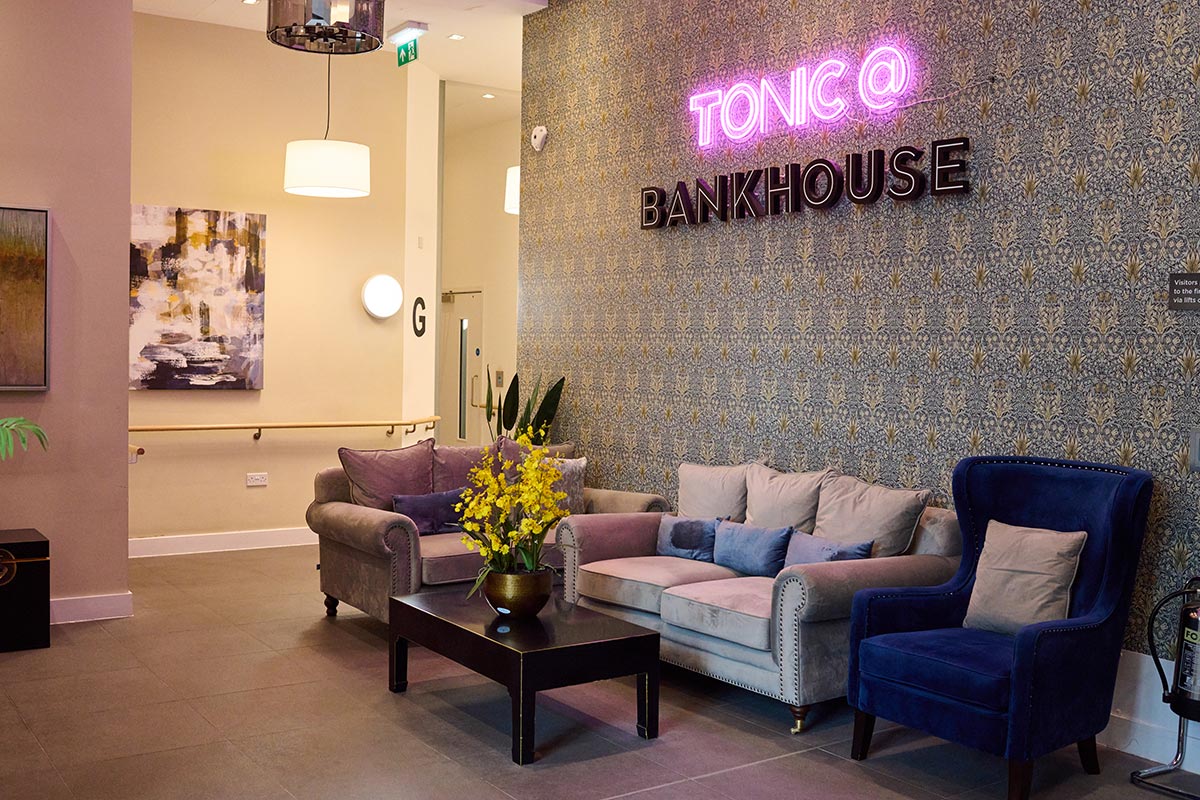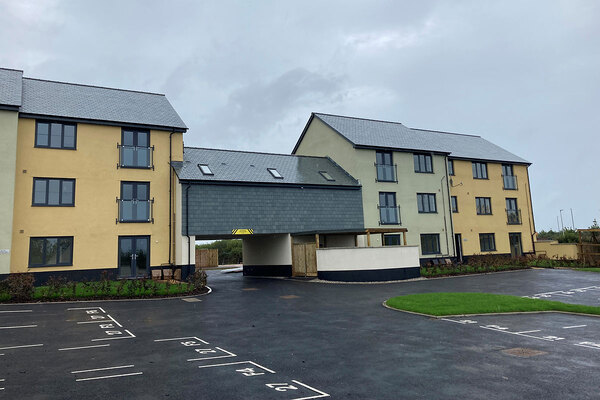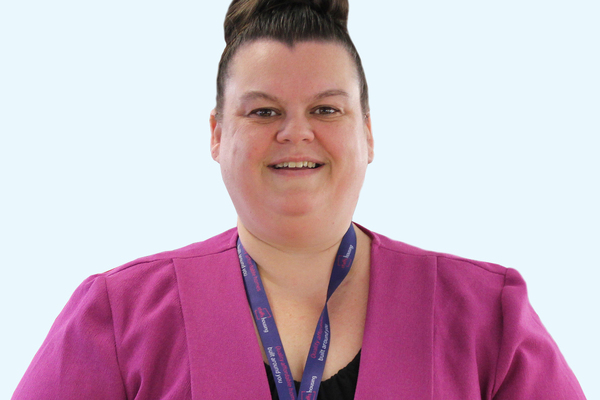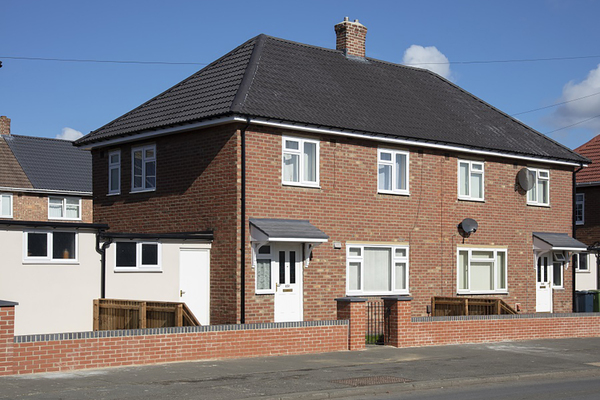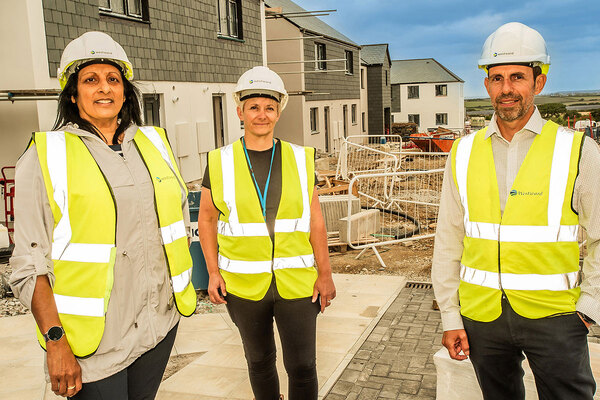You are viewing 1 of your 1 free articles
Pride for life: lessons from the LGBTQ+ retirement community in the heart of London
Many LGBTQ+ people face discrimination in mainstream retirement housing. Katharine Swindells visits an LGBTQ+ retirement scheme to find out the lessons for other providers. Photography by Dan Joseph
Min Ong is watering a herb garden on the roof of Bankhouse, a 14-floor retirement community on Albert Embankment. In one direction, the building looks out over the Thames. In the other is Vauxhall station and sprawling south London.
The majority of Bankhouse is an extra-care scheme, operated by Care Outlook for Lambeth Council. But Min is one of the residents of the upper four floors that make up Tonic, a retirement community aimed at LGBTQ+ people.
Min, aged 74 and a retired nurse, was one of the first people to move in. He bought his Tonic flat in late 2021 with his partner of four decades, Tim, who passed away around six months after they moved in.
“It was the place we were always looking for. We talked about it, we dreamt about it, we fantasised about it. And then there it was, just down the road!”
Downstairs an hour later at Tonic’s Thursday night drinks, Min is sat chatting with 79-year-old Rachel Harper, who isn’t a Tonic resident but proudly announces that she is one of the allies of the group, or as Min calls her, an “honorary gay”.
There are now eight people living in Tonic’s top four floors of Bankhouse. By the end of summer, nine more will have moved in. The Tonic apartments are all shared ownership, but Tonic currently has an application in to become a registered provider, which would allow it to offer social rent homes in Bankhouse and elsewhere across the UK.
“We know that the shared ownership doesn’t meet all of the community’s needs, but it’s a start,” says Bob Green, head of operations at Tonic. “And that’s the great thing about Tonic – they started somewhere. It’s vital that our communities have more choice, and up until Tonic, we didn’t have any choice.”
LGBTQ+ affirming or LGBTQ-majority accommodation already exists in Europe, Scandinavia and North America, but has been comparatively slow to take off in the UK. In addition to Tonic, older people’s housing provider Anchor has New Larchwood, a majority-LGBTQ+ residence in Brighton, and projects are in the works in Leeds and Manchester.
There is no doubt the demand is there. The 2020 census found that 187,000 people aged 55 and over in England and Wales identify as a sexuality other than heterosexual, and 50,000 identify as transgender. And it is a growing population. Among those aged 65-plus, 0.62% are LGB+, but that proportion more than doubles in the 55-64 age range, and continues to rise among each successively younger age group.
“The dynamic is changing and evolving” with new residents, particularly younger ones, says Min, and the group is adjusting to the life cycle of the Tonic community.
“It was the place we were always looking for. We talked about it, we dreamt about it, we fantasised about it. And then there it was, just down the road!”
Just a few months ago, the group grieved the loss of Lydia Arnold, Tonic’s first resident and the “leader” of their group. But, as its slogan says, Tonic is a place to “live our lives out”, a place for LGBTQ+ people to not only live but also die with dignity.
After Min’s partner Tim passed away last year, Min says the Tonic community was able to support him in a way that may not have been possible in a mainstream care facility, if he and Tim had not been fully out as a couple. Knowing that Tim was ill was one of the reasons they chose Tonic.
“We wanted to know that if one of us died, that the other would have a family,” Min says.
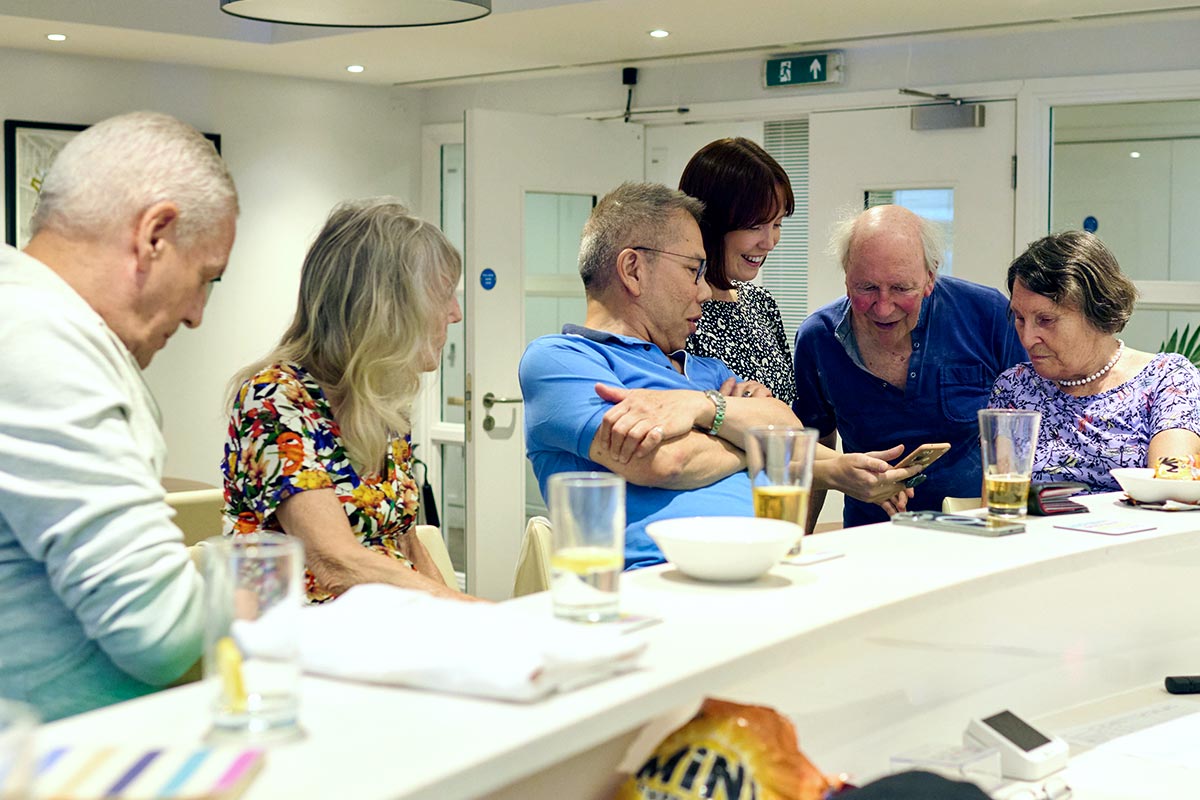
It has been more than 20 years since founder Geoff Pine had the experience that would inspire Tonic Housing, after his partner Jamie was diagnosed with a terminal heart condition. While Mr Pine was at work, Jamie was facing homophobic harassment from one of his regular carers. Tonic’s promise is that no Bankhouse resident, whether they live in Tonic’s section or the rest of the building, should face the experience Jamie did. The care staff are trained not just in LGBTQ+ awareness, but also LGBTQ-specific old-age care, such as supporting those living with HIV, or understanding how dementia may impact LGBTQ+ people.
“Many of our residents are thinking about their future care needs, and future-proofing their lives,” Mr Green says. “Not all of them have support needs now, but they know in the future they want that care and support from people who know what LGBT is all about. They want to be sure they are living in a space where the staff have been trained and have spent time around LGBT people so they understand and celebrate our identities together.”
Before joining Tonic, Mr Green was chief executive of LGBTQ+ charity Stonewall Housing for many years. The charity, he says, received reports from older people in mainstream housing of homophobia and transphobia, “from staff, neighbours and visitors”, even in accommodation that claimed to be LGBTQ-friendly.
The 2017 HouseProud HomeSAFE study, which surveyed LGBTQ+ residents of all ages in social housing, found that only a third were completely open about their LGBTQ+ identity to their neighbours, while a third were not out at all. A total of 36% said they were uncomfortable having neighbours in their home, rising to 91% among trans respondents.
A fifth said they were uncomfortable with repairs staff entering their home, and a quarter with their landlord. Some residents reported making changes to their home to hide their LGBTQ+ identity before someone came in, such as hiding pictures or books.
A total of 29% said their housing provider was not sensitive to the needs of LGBTQ+ people, and 34% said harassment was not effectively dealt with, and residents reported that claims were not taken seriously or housing officers were slow to respond.
In numbers
187,000
People aged 55 and over in England and Wales who identify as a sexuality other than heterosexual
36%
Percentage of LGBTQ+ residents in social housing who are uncomfortable having neighbours in their home
For LGBTQ+ people who have found a home where they feel safe and comfortable, the thought of moving to an extra-care scheme can be scary, says Adam Preston, LGBTQ+ housing development manager at charity LGBT Foundation, which is co-producing an LGBTQ+ extra-care scheme with Manchester City Council and housing association Great Places.
“Many older people feel a bit apprehensive about moving into a new home, or a different kind of environment,” Mr Preston says. “For someone who’s perhaps particularly concerned about homophobia or transphobia, and does feel quite secure in their home at the moment, they’re going to be even more concerned about uprooting that and moving into somewhere else where they may no longer feel safe or they may feel like they have to go back into the closet.”
“It’s not that a new place will be hostile, it’s just that it could be,” says 87-year-old Willie Millar. Willie says that in previous housing, he often felt isolated because he is gay.
“Tonic means comfort for me,” he says. “It’s easy, there’s no wondering if you’re saying the right thing or doing the right thing, or how folks are looking at you. When I was in Tottenham, I never had anyone to visit me because of that ‘nudge-nudge, wink-wink’. There’s always somebody who doesn’t approve.”
Affirmation vs acceptance
Beyond safety and protection from harassment, Tonic aims to create a strong community that can counter loneliness, which is especially severe in the older LGBTQ+ community, who are more likely to be single, live alone, and have less contact with their relatives.
“In lockdown I’d ended up in a flat in Canary Wharf, where I never got to know the name of my neighbour. I didn’t get to meet anyone,” says 73-year-old Steve Busby. “And nothing usually gets to me mentally, but this did. I knew I had to get out. When I heard about Tonic, I knew it was exactly what I was looking for. I can do my own thing, but there’s always people and things to do if I want to.”
But while Tonic was created with the LGBTQ+ community in mind, Mr Green says it was always supposed to reach beyond just the residents of the top four floors.
“It’s powerful seeing our Tonic residents build up that community not just with each other, but also with the other Bankhouse residents. It doesn’t matter if you identify as LGBT or not, you’re part of this community”
“Everybody who lives at Bankhouse knows it’s an LGBT-affirmative space, and that there is zero tolerance of not just homophobia and transphobia, but any form of discrimination, and we are there to celebrate all of our histories and all of our identities,” he says.
“It’s powerful seeing our Tonic residents build up that community not just with each other, but also with the other Bankhouse residents. It doesn’t matter if you identify as LGBT or not, you’re part of this community.”
But despite Tonic and similar schemes cropping up across the country, the majority of LGBTQ+ people will likely always live in mainstream housing. So what can social landlords, and any organisation providing extra-care schemes, learn from places like Tonic about LGBTQ+ affirmation?
“Why should we only have to be accepted?” Min asks. “Accepted is almost like tolerated. But affirmative is: you don’t have to explain anything, you’re part of us.”
There are a whole range of accreditations out there, explains Claire Linacre-Hilton, director of development at Stonewall Housing, but a flag or certificate does not necessarily mean all the staff are properly trained.
“All it takes is some staff turnover, or for the training to be put on pause for a few years, and in that time, so much can change in the law, in services and in language,” she says.
Stonewall Housing is pushing for mandatory training for all frontline housing staff, and making sure that training is administered by an organisation with LGBTQ+ housing expertise – “someone who just knows this world inside out”.
Rather than one-off training, which can be a “tick-box exercise”, says Mr Preston, who works on LGBT Foundation’s housing training, there needs to be follow-up, and an ongoing relationship between the providers and LGBTQ+ charities and organisations. LGBTQ+ affirmation needs to be embedded at the top level, to “change the whole ethos and culture in that organisation”.
“We thought society was over the prejudice, but now sometimes it feels like it’s getting worse,” says Min. “But this community is somewhere we don’t have to worry about that.”
Sign up for our care and support newsletter
Already have an account? Click here to manage your newsletters
